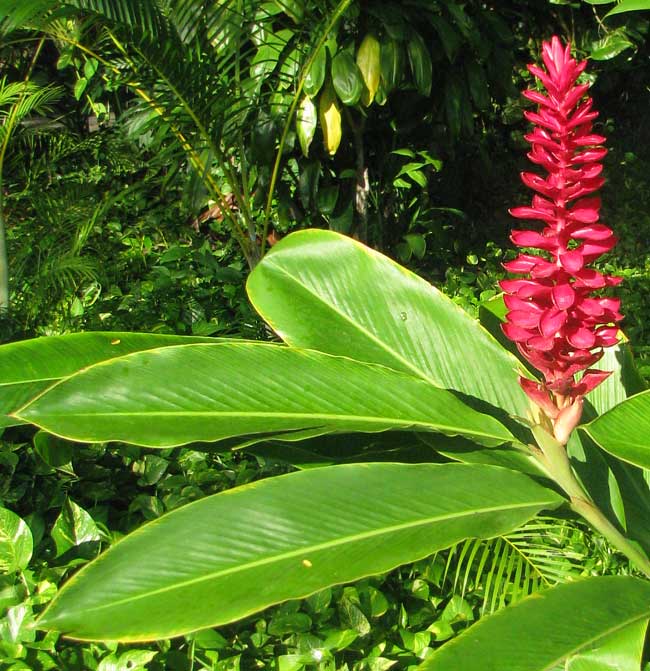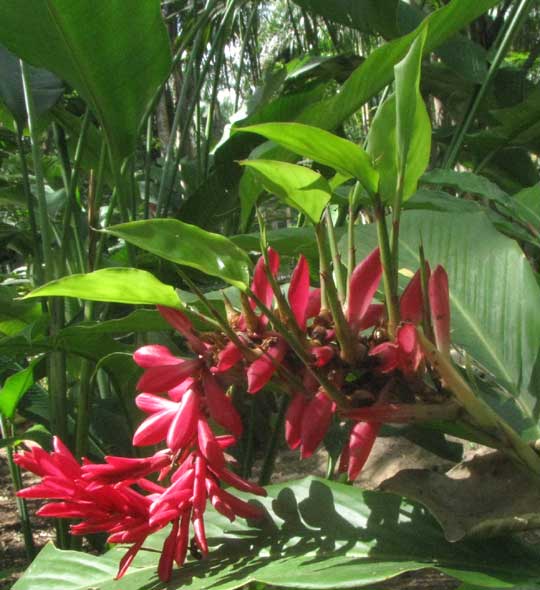Excerpts from Jim Conrad's
Naturalist Newsletter

from the December 13, 2009 Newsletter issued from Hacienda Chichen Resort beside Chichén Itzá Ruins, central Yucatán, MÉXICO; limestone bedrock, elevation ~39m (~128ft), ~N20.676°, ~W88.569°
RED GINGER
One of my tasks here is to develop a "Plant Finding Guide" so that as visitors walk around the grounds they can identify the more interesting and spectacular plants. This is something I enjoy and I always learn something new about each species.
Actually, despite the spike's colorfulness, at this time our Red Gingers bear no flowers. Each red, scoop-shaped item is a bract, or modified leaf, which during the flowering season arises beneath a flower. If right now you look into the axil between a bract and the flower stem you'll find only a scar where the fruit has fallen off, or maybe in the lower bracts you'll find an old fruit. The flowers when they do come will be fragrant and orchidlike, white tinged purplish, so that's something to look forward to seeing.
Despite its prettiness this is a rugged and adaptable plant. Originally from Malaysia, in much of the tropics it's gone wild and now is considered an invasive species unwelcome in many places because of its impact on the local flora.
from the February 26, 2012 Newsletter issued from Hacienda Chichen Resort beside Chichén Itzá Ruins, central Yucatán, MÉXICO; limestone bedrock, elevation ~39m (~128ft), ~N20.676°, ~W88.569°
RED GINGER'S VEGETATIVE SHOOTS
Red Ginger is easy to propagate because often it produces large, ready-to- transplant, leafy shoots among its flowers, as seen below:

I established several Red Gingers outside the hut door using sprouts just like these. Just picked them off the plant, stuck them into the ground, and waited.